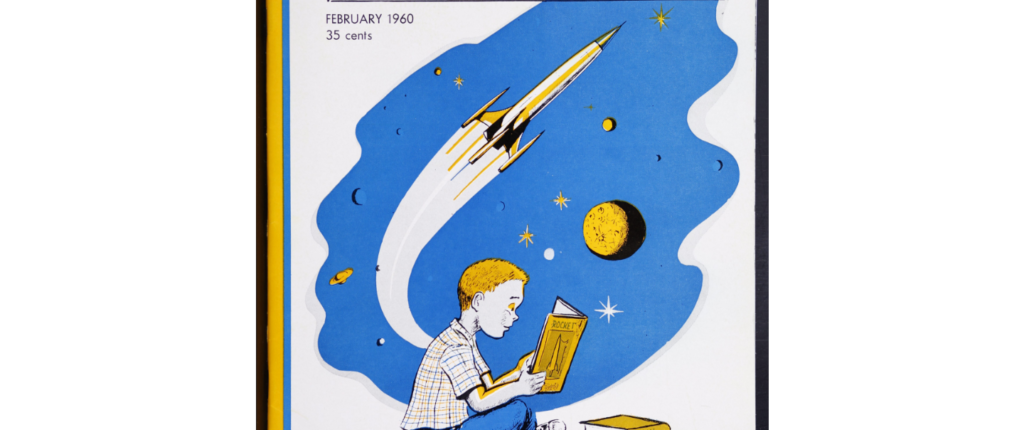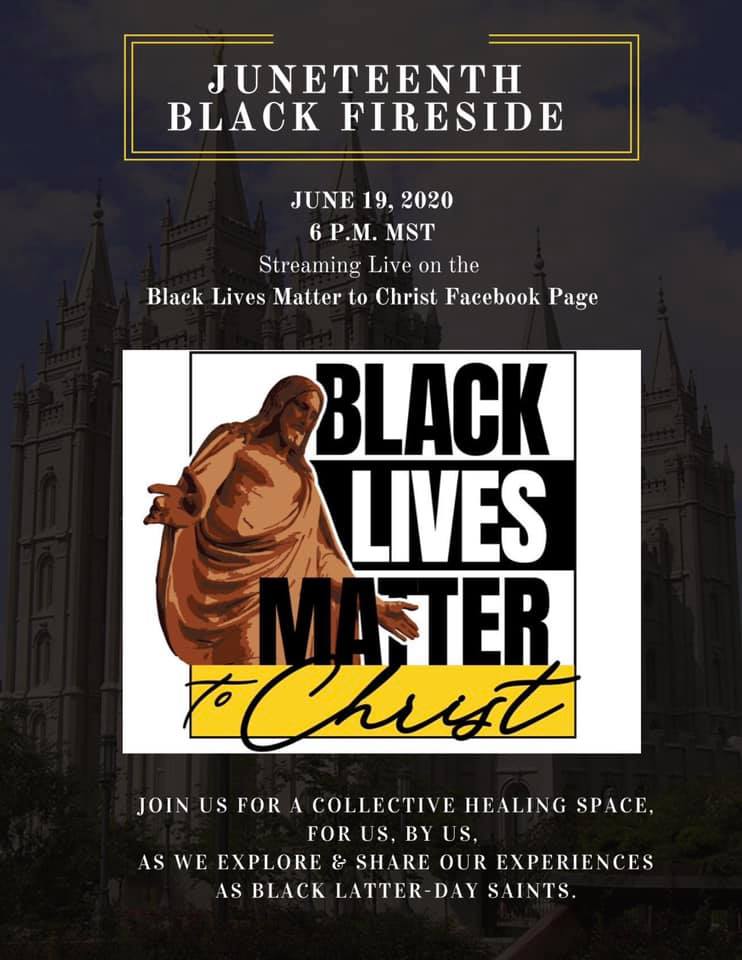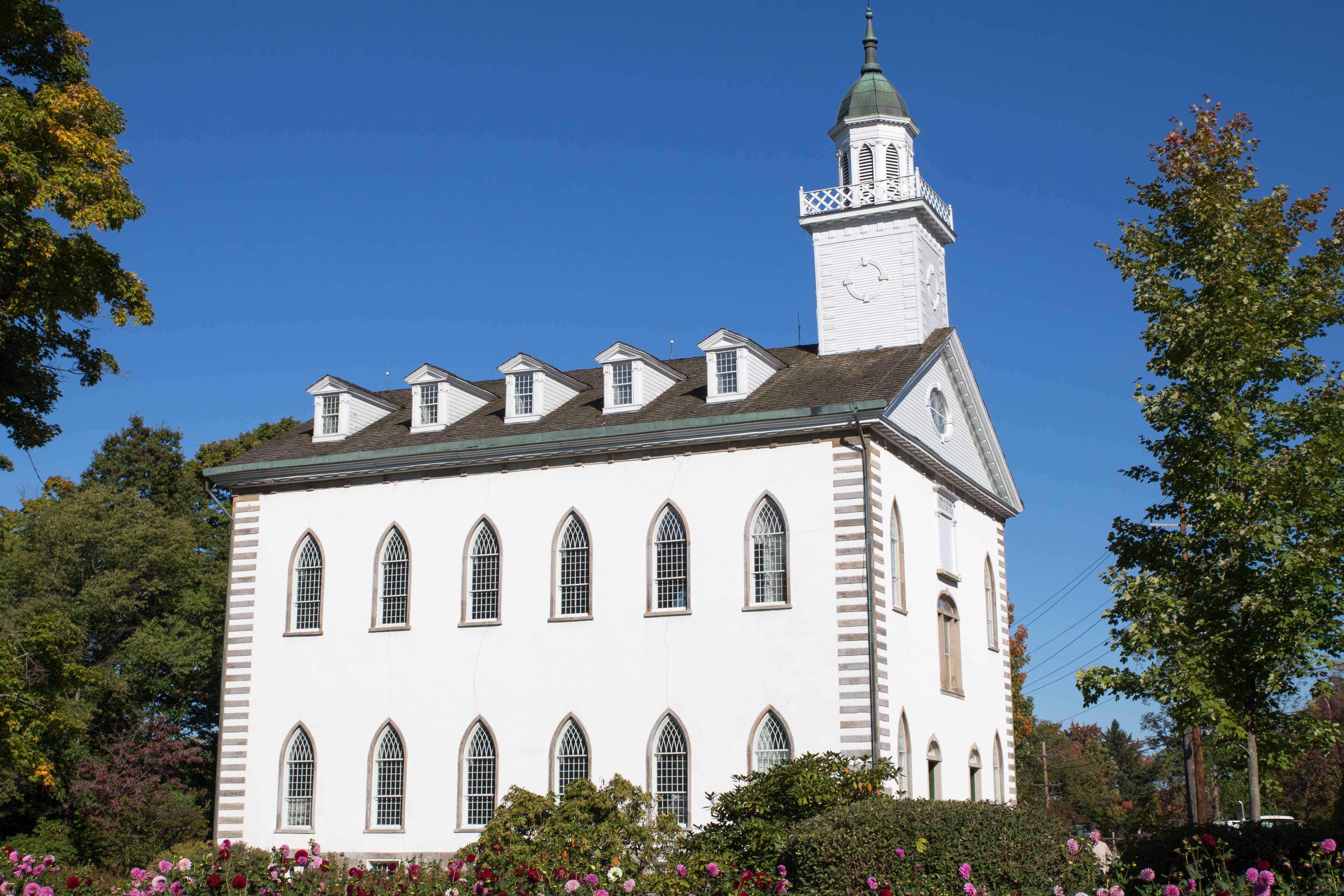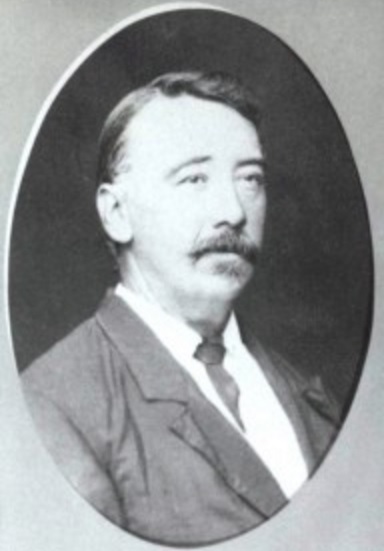Now Available from the Church History Library: The Children’s Friend
By June 29, 2020
If you’re interested in what was taught to Latter-day Saint children from 1902-1970, you can now do so!

By June 29, 2020
If you’re interested in what was taught to Latter-day Saint children from 1902-1970, you can now do so!

By June 28, 2020

| Call for Papers – Inaugural issue of the JMSSA [Original Post] The Journal of the Mormon Social Science Association (JMSSA) is accepting submissions for our inaugural issue in 2021. Papers accepted for publication will receive a $500 honorarium. JMSSA is a peer-reviewed academic journal sponsored by the Mormon Social Science Association. Founded in 1979, the MSSA is an interdisciplinary scholarly society promoting the study of social life within the Latter Day Saint movement. Aims and Scope The Journal of the Mormon Social Science Association publishes original research, synthetic reviews, and theoretical or methodological essays on topics relevant to the Latter Day Saint movement from a social science perspective. We welcome papers from all social science disciplines, as well as work in other disciplines with a social science approach. We encourage submissions from students, junior scholars, and underrepresented voices in Mormon Studies. The journal is atheological and nonpolemical. The journal does not consider previously published work except by invitation. The journal does not consider papers simultaneously submitted elsewhere for review. Submissions Journal of the Mormon Social Science Association accepts papers of any length, including research notes. All submissions are screened by the editor or editorial board to determine their suitability for the journal. Papers deemed suitable are forwarded for peer-review. Subsequent to peer-review, papers may be rejected, returned for revision, or accepted for publication. The journal conforms to the “author-date” citation system outlined in The Chicago Manual of Style, 17th edition (Chapter 15). All submissions must be accompanied by an abstract not to exceed 250 words. Abstracts should state the research question(s), identify basic methods, and summarize main findings. Footnotes should be used for essential clarification only, and not for excurses. Send submissions in MS Word format to: benjamin.knoll@centre.edu For more information, contact Rick Phillips, rick.phillips@unf.edu |
By June 24, 2020
This is an abbreviated version of a longer review that will appear in a forthcoming issue of the Journal of Mormon History (thanks to the editors of the journal for permission to post this in advance of the journal’s version). If you missed it, see here for editor Brenden Rensink’s JI guestpost on the book.
P. Jane Hafen and Brenden W. Rensink, eds. Essays on American Indian & Mormon History. Salt Lake City: University of Utah Press, 2019. xxxiv + 372 pp. Notes, bibliography, contributors, index. Hardback: $45.00. eBook: $40.00.
P. Jane Hafen (Taos Pueblo) and Brenden W. Rensink have compiled eleven substantive essays that explore themes in the history of American Indians and the Church of Jesus Christ of Latter-day Saints. Hafen is professor emerita of English at the University of Nevada, Las Vegas, while Rensink is Associate Director of the Charles Redd Center for Western Studies and Associate Professor of History at Brigham Young University. Most of the essays in the collection were written in conjunction with a seminar hosted by the Redd Center in 2016. The editors’ introduction states that the collection seeks to identify “ways [that] Indigenous thought”—centered around issues such as Indigenous sovereignty, land and resources, colonialism, and decolonization—“interacts with Mormon histories, Mormon arts, and contemporary Mormon practices” (xii-xiii). The introduction notes that previous scholarship has, with few exceptions, focused primarily on white Latter-day Saint views of Native peoples, whereas the featured essays instead reverse the equation by placing Natives at the center of the telling of Latter-day Saint history.
By June 19, 2020
Joanna Brooks, Mormonism and White Supremacy: American Religion and the Problem of Racial Innocence (New York: Oxford University Press, 2020)
I
Like her earlier volume edited with Gina Colvin, Decolonizing Mormonism (University of Utah, 2018), Joanna Brooks’s new Mormonism and White Supremacy is an exhortation as much as it is an academic work. Both both books ask us to consider where the lines between academic analysis and moral analysis exactly lie. Brooks discards the traditional pretense of academic objectivity, the stentorian presumption of omniscience that echoes through the pages of most university-published tomes.
To that end this book will probably be most comprehensible to Latter-day Saint audiences, and Brooks probably intends that. Her book moves quickly through the history of the tradition and assumes some familiarity on the reader’s part with phrases like “First Presidency” and “John Taylor.” Brooks inserts herself into the narrative, a product as well as an analyst of the community she writes about. Indeed, in a real sense this book is a plea to that community. Brooks’s first lines testify to that: “This book seeks to instigate soul-searching,” she declares, “academic, institutional, and personal.” (1)
She writes as an anguished Mormon. She wants her fellow Saints to mourn with those that mourn. She believes that though her tradition has enabled such pain, its Christian roots also equip it to be particularly convicted by the reality of pain and particularly prepared to pursue its alleviation. Brooks not only describes what Christian theology is—she also declares what Christian theology should be quite straightforwardly. A “robust Christian conceptualization of sin would hold that it is a deadly but structuring condition of mortality, just as racism is a deadly but structuring condition of life in the United States.” (5)
Is this unusual for a book about history published by Oxford University Press? In some ways. As American academia institutionalized and professionalized, gradually academics, like journalists, came to see themselves as neutral arbiters, and though every introductory graduate course in the humanities solemnly counsels graduate students that objectivity is impossible, most books (at least in the discipline of history) tend to avoid personalizing the narrative. There is, though, a range of newer scholarship pressing back against this, forcing us to consider ourselves as authors and to perceive the public and political implications of our work. This is probably a good thing.
II
Though Brooks’s prose has a light touch a fair amount of theory drifts through the book. This means while it seems to be written for a Mormon audience it will also be most easily digested by those with at least some familiarity with academic theory about race. That choice may be dangerous, given Brooks’s intentions. But this is still a compelling story about the enactment of a grim tautology. Early Mormons were mostly white people who took for granted their whiteness—an identity then as now with uncertain borders that white Mormons among many others have contributed to defining and clarifying as, for the most part, themselves. Because they were white they believed the church they founded also to be white—if only implicitly.
It is important to recognize that while many Americans imagine “racism” in terms of making conscious choices that reflect disdain for people of other backgrounds, a more useful conceptualization of the term acknowledges that is as much or more about assumption, conditioning, structure and possibility as it is about individual animus or aggressive hate. Therefore, white Mormons simply by default assumed the church’s structures and cosmology to coincide with the racial distinctions they understood to exist on earth. Hence as they created their church they also created, to some extent, what whiteness meant.
And hence, white Mormons like many other white Christians imputed those distinctions onto the hierarchies of eternity, lending the racial structures they believed to exist the weight of divine sanction. As white Mormons teased out their theologies—of sealing, of divinization, of temple worship and priesthood—they nearly always stumbled over people they understood to be not white. These people were to them theoretical problems, needing theological explanation and a place to be slotted into their unfolding maps of heaven. That process defined what it meant to be white in the context of this religion, but it also gave white supremacy on earth divine sanction and justification. By the twentieth century when questioned about its existence within their church, Mormons could simply point to God.
Brooks focuses here primarily upon “whiteness” and “blackness” as categories of identity in white Mormons’ imagination. There are, of course, any number of other racial identities that might play a part in this story. There are also many, many elements co-constitutive with racial identity that Brooks does not touch upon; in particular I think of the co-formation of race and class, as the economic aspects of identity are often overlooked in academic work on Mormonism and race, or religion and race more generally. But Brooks stays focused on the simple fact of white supremacy itself, and how Mormons came to reify it, and that relentlessness gives the book the moral power of a jeremiad.
III
Structurally and conceptually, this book reminds me of Colleen McDannell’s recent Sister Saints (Oxford, 2018). Like that book, this one retells a familiar history from a new angle. We are acquainted with most of Brooks’ characters: they are high church leaders, intellectuals, and activists. She has not really uncovered any stories that historians did not already know. But she has told them in a new way, viewed them through the lens of theory, and showed us new shadows that these people cast, or new light that they threw.
So, like McDannell, her book points to the possibility of stories told from other perspectives—and indeed, Brooks exhorts her Latter-day Saint readers to perceive that possibility, to be aware of other stories, and to do what they can to elevate them. Her introduction and conclusion call upon her Latter-day Saint readers to plumb their tradition in order to confront the challenge. Indeed, one comes away from Brooks’s book with the impression that though this tradition has caused such pain, the Christian resources it has within it might enable believers to be particularly attuned to suffering, particularly equipped for repentance, and particularly capable of imagining what a just and Zion society might look like.
Though Brooks’s subjects often act in ways most Americans today would find distressing, Brooks warns us not to be distracted. She does not “wish to impugn the character of individuals. Rather my goal is to assess how systems of inequality take shape through everyday conduct and choices, policies, laws, and theologies, so that we have a better sense of how to dismantle them.” (17)
Stories point us past themselves toward systems. Individuals make decisions circumscribed by institutions. The real task ahead is not simply to rage at the stories that we have been told or to condemn those who enact injustice. The real task ahead is to write new stories and raise new generations, and hence to build new systems. That task is what this book helps us—Mormons and academics alike—to imagine.
By June 18, 2020
We are grateful to organizer Melodie Jackson for passing on details for this event. Here are her words: “There will be some amazing people speaking and singing. It is a healing space for Us. By Us. To Us. I hope you can spread the word and invite as many black people as you can to come and hear each others’ stories. There are healers among us, and I’m excited for you to hear them and feel community, feel heard, and feel seen amidst so much chaos. It will be streamed live through this (Black Lives Matter to Christ) page! 6 pm MST time. Come ready to be validated and filled. See y’all there!”
While we are a Mormon history blog, and not a devotional outlet, we support the work of Black academics doing anti-racist work in Mormonism.

By June 5, 2020
Don’t overthink this. Spend $10. Help keep the temple open to the public. Learn a lot. Give more if you can.
https://www.kirtlandtemple.org/onlinetour

By June 3, 2020
My mom has been reading Saints, volume 2. And as we are wont, she called me with a fun fact. She had read that Wilford Woodruff was the first person to wear white clothing to officiate in at the temple [n1]. I responded that indeed, not only that but it was a suit made of deer skin. My mom was somewhat incredulous.
By June 1, 2020
I found this in the Journal of Charles L. Walker. I hope that others will point me to Latter-day Saint songs we haven’t heard before.

JOURNAL: St. George–June 1st. Dry and warm. Went with the choir to Pres. Young’s house to pay our respects on this anniverary of his birthday. The choir sand a song on teh north porch and were then invited into the hall and theer sang several songs appropriate to the occasion. The following one I composed for the choir, who did credit to it by the animated style in which they sang.
By May 29, 2020
Friend of JI Matt Grow passed this on to us. Dr. Grow is the President of the Communal Studies Association for 2020. Here is a LINK to the original.

Dear Communal Studies Association Members,
The CSA board met this past week to consider how best to hold a conference this fall. Given the uncertain situation with the COVID-19 pandemic—including the potential health challenges of traveling and meeting together, as well as budget cuts and travel restrictions at many institutions—we decided that it would be best to hold a “virtual” conference. Our conference will occur on the same dates, October 1-3, and have the same theme, “Foundations and Futures.” But rather than meet at the Historic Ephrata Cloister in Pennsylvania, we will meet on-line to hear the latest scholarship and perspectives in the field of communal studies.
© 2025 – Juvenile Instructor
Recent Comments
Steve Fleming on BH Roberts on Plato: “Interesting, Jack. But just to reiterate, I think JS saw the SUPPRESSION of Platonic ideas as creating the loss of truth and not the addition.…”
Jack on BH Roberts on Plato: “Thanks for your insights--you've really got me thinking. I can't get away from the notion that the formation of the Great and Abominable church was an…”
Steve Fleming on BH Roberts on Plato: “In the intro to DC 76 in JS's 1838 history, JS said, "From sundry revelations which had been received, it was apparent that many important…”
Jack on BH Roberts on Plato: “"I’ve argued that God’s corporality isn’t that clear in the NT, so it seems to me that asserting that claims of God’s immateriality happened AFTER…”
Steve Fleming on Study and Faith, 5:: “The burden of proof is on the claim of there BEING Nephites. From a scholarly point of view, the burden of proof is on the…”
Eric on Study and Faith, 5:: “But that's not what I was saying about the nature of evidence of an unknown civilization. I am talking about linguistics, not ruins. …”